#Lunar Roving Vehicle
Text

"Apollo 17 Commander Eugene A. Cernan and Lunar Module Pilot Harrison H. Jack Schmitt are preparing the Lunar Roving Vehicle (LRV) and the Communications Relay Unit (LCRU) mission simulation. Support Team Astronaut Gordon Fullerton, standing, left, discusses test procedures to be performed in the High Bay of the Manned Spacecraft Operations Building (MSOB). The Lunar Module Ascent and Descent stages also receive preflight checkout in preparation for the sixth U.S. manned lunar landing mission."
Date: August 8, 1972
NASA ID: 72PC-0412
#Apollo 17#LM-12#Lunar Module#Challenger#NASA#Apollo Program#J-type mission#August#1972#Lunar Roving Vehicle#Lunar Rover#LRV#Manned Spacecraft Operations Building#MSOB#Kennedy Space Center#KSC#Florida#my post
155 notes
·
View notes
Text
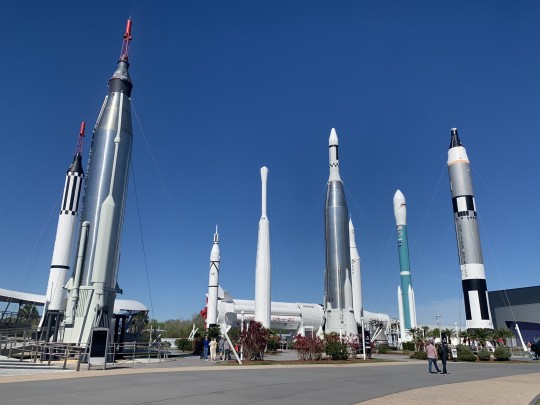
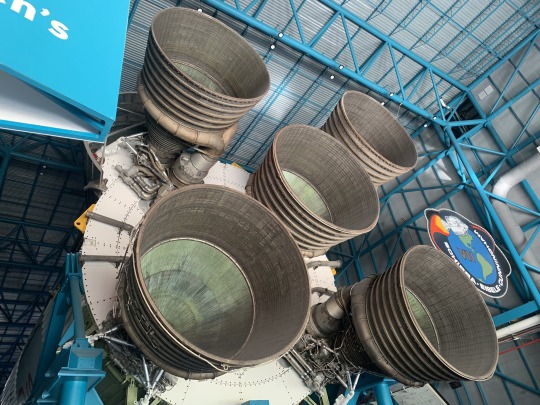



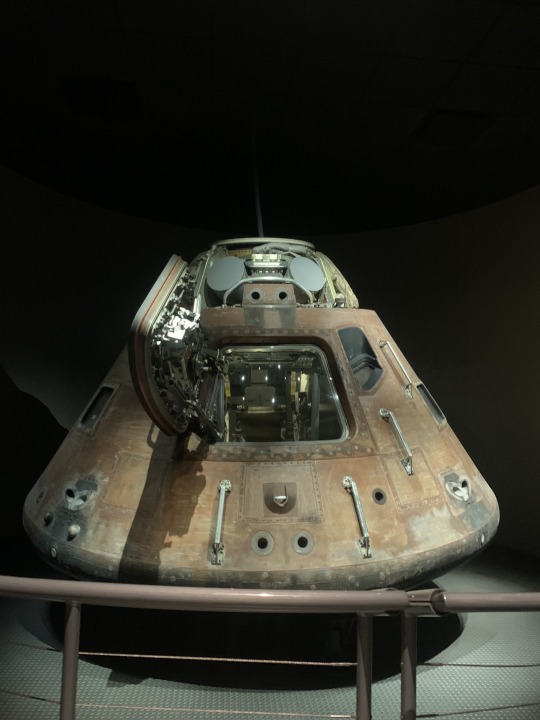

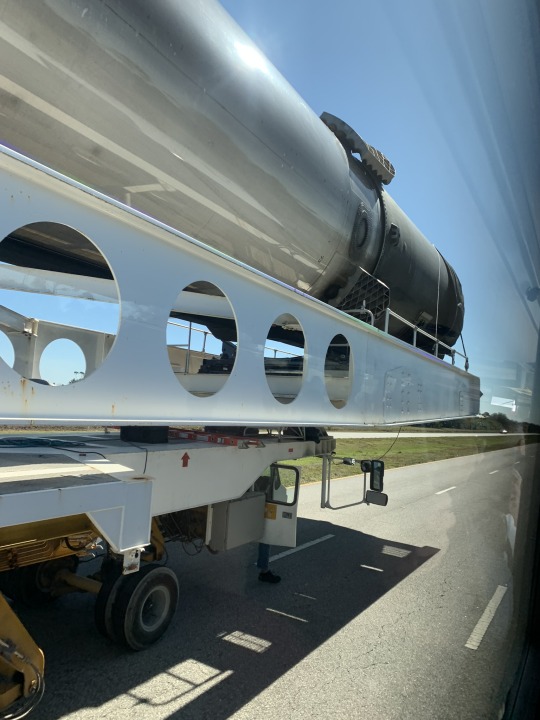

February 14, 2023
Kennedy Space Center Visitor Complex, Florida
#photography#kennedy space center#florida#cape canaveral#space#space travel#apollo space program#rocket ship#space shuttle#space shuttle atlantis#lunar roving vehicle
4 notes
·
View notes
Photo
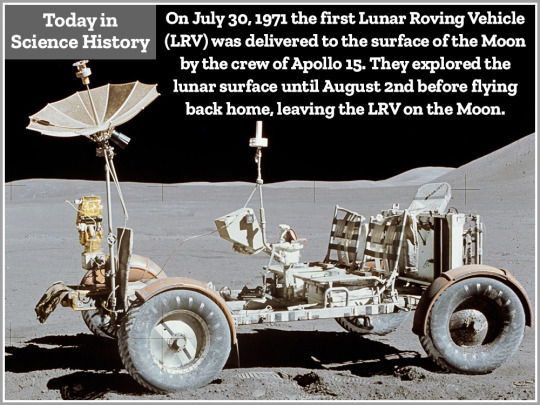
On July 30, 1971 the first Lunar Roving Vehicle (LRV) was delivered to the surface of the Moon by the crew of Apollo 15. They explored the lunar surface until August 2nd before flying back home, leaving the LRV on the Moon.
#lunar roving vehicle#lrv#moon landing#apollo 15#nasa#lunar exploration#science#science history#on this day#on this day in science history
2 notes
·
View notes
Text

#Astronaut Eugene A. Cernan makes a short checkout of the Lunar Roving Vehicle (LRV) during the first Apollo 17 extravehicular activity (EVA)#HeStoleMyBalloons#oldschool
100 notes
·
View notes
Text

Apollo 17 Lunarscape: A Magnificent Desolation - April 20th, 1996.
"Buzz Aldrin, Apollo 11 Lunar Module pilot and the second human to walk on the Moon, described the lunar landscape as "a magnificent desolation". Dramatic pictures from the Apollo missions to the Moon's surface testify to this apt turn of phrase. Near the Apollo 17 landing site, Family Mountain (center background) and the edge of South Massif (left) frame the lunarscape in this photo of astronaut Harrison Schmitt working alongside the lunar roving vehicle. Schmitt and fellow astronaut Eugene Cernan were the last to walk on this magnificent desolation."
38 notes
·
View notes
Text


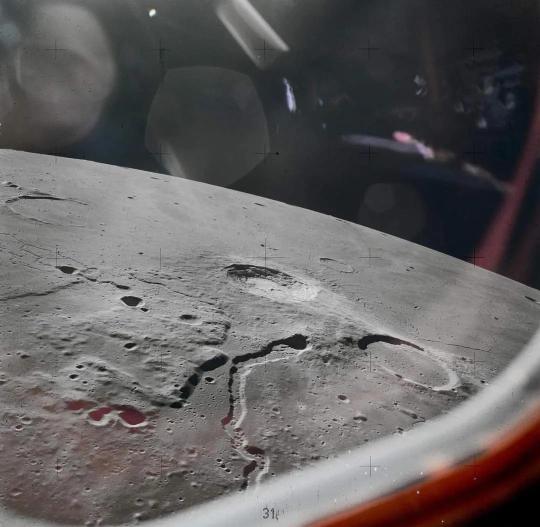


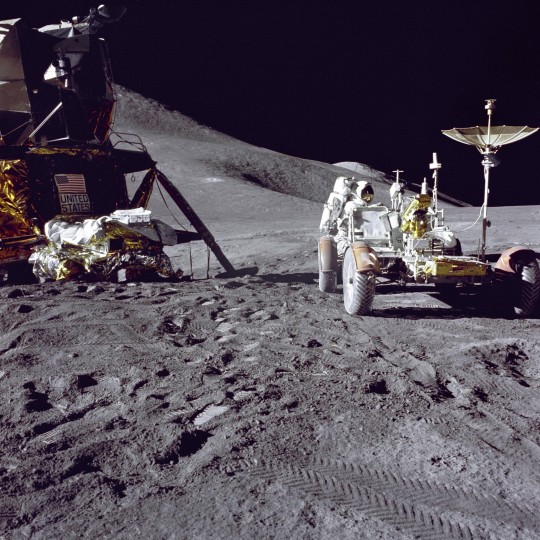

Apollo 15 Fourth crewed Moon landing 4K Quality
Apollo 15 (July 26 – August 7, 1971) was the ninth crewed mission in the United States' Apollo program and the fourth to land on the Moon. It was the first J mission, with a longer stay on the Moon and a greater focus on science than earlier landings. Apollo 15 saw the first use of the Lunar Roving Vehicle.
#astronomy#nasa#astronomers#universe#astrophotography#nasa photos#nasawebb#astrophysics#outer space#hubble space telescope#astronauts#apollo#apollo 15#historic#spacecraft#space exploration#our moon#planet earth#planets#space#astro community#astro notes#astro observations#astroblr#astrology observations#astronomy photography#astronomy picture of the day#nasa picture of the day#rocket launch#team rocket
60 notes
·
View notes
Photo

Apollo 16 Moon Panorama : Fifty years ago, April 20, 1972, Apollo 16's lunar module Orion touched down on the Moon's near side in the south-central Descartes Highlands. While astronaut Ken Mattingly orbited overhead in Casper the friendly command and service module the Orion brought John Young and Charles Duke to the lunar surface. The pair would spend nearly three days on the Moon. Constructed from images (AS16-117-18814 to AS16-117-18820) taken near the end of their third and final surface excursion this panoramic view puts the lunar module in the distance toward the left. Their electric lunar roving vehicle in the foreground, Duke is operating the camera while Young aims the high gain communications antenna skyward, toward planet Earth. via NASA
321 notes
·
View notes
Text

lunar-tread! whose based on a toy who has exactly no official bio and so i can do whatever i want :)
pronouns: she/her and he/him
allegiance: autobot
alt mode: LRV (lunar roving vehicle)
a wanderer in spirit, assigned to a stationary and fairly boring, lonely defensive position on one of cybertron's moons. she uncovered the remains of an ancient guardian robot and decided not to report it for somewhat selfish reasons, and has since been digging around in them out of curiosity and seeing if he can get them back online
67 notes
·
View notes
Text
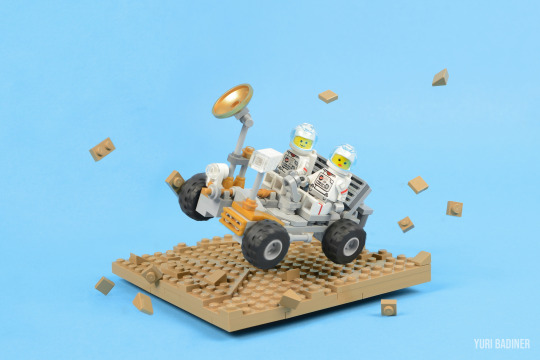
The Apollo LRV
My MOC Lunar Rover, inspired by the real-life “The Apollo Lunar Roving Vehicle”. This is an electric vehicle designed to operate in low lunar gravity. Yes, some people had a chance to drive electric cars long before it became mainstream.
Four lunar rovers were built by Boeing in the early 70’s, one each for Apollos 15, 16, and 17, and one that was used for spare parts after the cancellation of further Apollo missions.
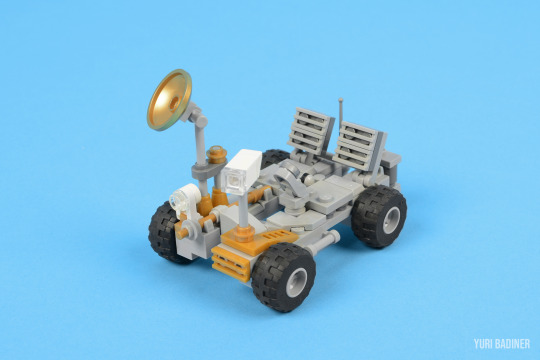



The Lunar Roving Vehicle had a mass of 210 kg and was designed to hold a payload of an additional 490 kg on the lunar surface. A large mesh dish antenna was mounted on a mast on the front center of the rover. Power was provided by two 36-volt silver-zinc potassium hydroxide non-rechargeable batteries with a capacity of 121 amp-hr.
Harrison Schmitt of Apollo 17 said, "....the Lunar Rover proved to be the reliable, safe and flexible lunar exploration vehicle we expected it to be. Without it, the major scientific discoveries would not have been possible; and our current understanding of lunar evolution would not have been possible."

I never got around to taking any kind of artistic photo of this rover (apart from the title photo); it still lies in a container called “Maybe later.”
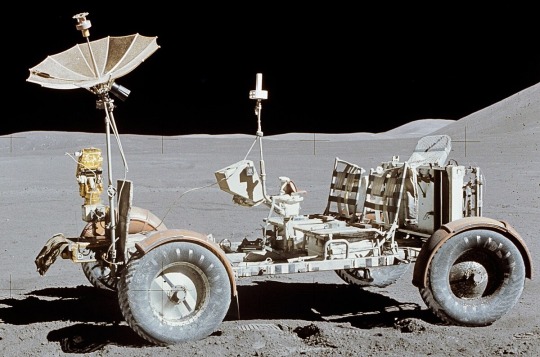
44 notes
·
View notes
Text

SPACE ART
Date: February 24, 1978
NASA ID: GRC_1978_00640
NARA: 17422001
#Space Shuttle#Orbiter#NASA#Space Shuttle Program#Lunar Roving Vehicle#Lunar Rover#LRV#moon#Wright Flyer#Skylab#Space Station#Saturn V#Rocket#Apollo Program#Apollo Applications Program#Apollo–Soyuz#Apollo Soyuz Test Project#ASTP#Lunar Module#Earth#Artwork#exploration#February#1978#my post
25 notes
·
View notes
Text
Happy Moon Landing Day! My mom gave me this stamp awhile ago to "prove this country used to care about scientific achievement and progress" which seems very on theme! (let's not spoil it rn by getting into how much it was actually about "beating the commies")

Out of curiosity I looked it up, and it actually came in a two stamp set:

They're not specifically moon landing exclusive, but meant to commemorate the whole decade from Alan Shepard's spaceflight through Apollo 15 which was the first mission to use the Lunar Roving Vehicle (aka Moon Buggy).
#moon landing day#moon#space#apollo program#apollo 15#described in alt#apollo 14 was the one with golf in case you were wondering#they also brought up a bunch of seeds and if you've heard of moon trees that's where they're from#well artemis took some up too but current moon trees are all from apollo 14#anyway wild that there are trees more well travelled than you out there huh
13 notes
·
View notes
Text

On July 30, 1971 the first Lunar Roving Vehicle (LRV) was delivered to the surface of the Moon by the crew of Apollo 15. They explored the lunar surface until August 2nd before flying back home, leaving the LRV on the Moon.
#the moon#lunar roving vehicle#lrv#science#science history#on this day#on this day in science history
1 note
·
View note
Text

Apollo 15 astronauts Jim Irwin, Al Worden, David Scott with their matching AstroVettes and lunar roving vehicle from LIFE magazine June 1971.
9 notes
·
View notes
Text

SwRI receives $2 million NASA grant to develop lunar-regolith-measuring instrument
Southwest Research Institute (SwRI) has been awarded a three-year, $2,041,000 grant from NASA’s Development and Advancement of Lunar Instrumentation (DALI) program to further develop a novel ground-penetrating radar instrument. The Synthetic Pulse Artemis Radar for Crustal Imaging (SPARCI, pronounced “sparky”) instrument is designed to characterize the depth of the regolith and upper megaregolith, the upper broken-up layers of lunar crust associated with impact cratering.
SwRI is one of five teams awarded funding by NASA’s DALI program, which supports the development of instruments for future lunar missions, including Commercial Lunar Payload Services and Artemis. DALI’s goal is to develop and demonstrate instruments that are technically ready to propose for upcoming flight opportunities. These instruments must demonstrate new technologies that significantly improve instrument measurement capabilities for addressing high-priority lunar science questions.
When astronauts return to the Moon during the second half of this decade their tasks will include deploying lunar instruments and using new technology to characterize the Moon. SPARCI’s two large transmitting antennas that are 172 and 40 meters in length are designed to be deployed by astronauts. A robotic rover with much smaller antennas will then receive radar signals that penetrate the Moon’s subsurface. The ground-penetrating radar will measure the thickness and structure of the lunar megaregolith. Believed to be between 0.4 and 5 kilometers deep, the megaregolith formed just after the Moon solidified and likely experienced heavy bombardment from other objects during the early formation of the solar system.
“Learning more about the lunar megaregolith will help us gain a wider understanding of the Moon’s formation and that of similar bodies with thin, sparse atmospheres,” said SwRI’s Dr. David Stillman, the project’s principal investigator. “If we are able to pinpoint exactly where this layer begins, we can use that to create more accurate formation and evolution models.”
SPARCI’s design was inspired by Apollo 17’s Surface Electrical Properties (SEP) experiment, which collected subsurface data on the Moon while attached to the Lunar Roving Vehicle. Like SEP, SPARCI uses two stationary transmitting antennas and a mobile receiver but attached to a robotic rover instead of an astronaut-driven vehicle.
“SPARCI uses much wider bandwidth and electronics that are 50 years more advanced than the SEP, enabling both deeper and higher-resolution imaging,” Stillman said. “SPARCI will determine the thickness and density of the overall regolith, measuring the structure of the upper megaregolith and the depth of the lower regolith. This information will help advance understanding of impact processes on the Moon and other bodies that don’t have significant atmospheres. If we can pinpoint exactly where this layer below the landing site, we can use other global datasets to better constrain the structure of the megaregolith globally.”
IMAGE....The Synthetic Pulse Artemis Radar for Crustal Imaging (SPARCI, pronounced “sparky”) is designed to measure the depth and structure of the lunar regolith. Southwest Research Institute has received a $2 million grant from NASA’s Development and Advancement of Lunar Instrumentation (DALI) program to develop the novel ground-penetrating radar instrument. This image shows the SPARCI receiver prototype in operation on a lunar analog on Earth. Credit Southwest Research Institute/Bryan Pyke
5 notes
·
View notes
Text

Apollo 15's Home on the Moon - February 22nd, 1996.
"The lunar module shown above, named "Falcon," served as home for Apollo 15 astronauts David Scott and James Irwin during their stay on the Moon in July and August of 1971. Meanwhile, astronaut Alfred Worden circled in the command module overhead. Harsh sunlight on the grey lunar surface lends the image an eerie quality, while the Lunar Apennine Mountains frame the background with Mount Hadley Delta visible on the right. Visible in the foreground are tracks from the first Lunar Roving Vehicle, an electric car which enabled the astronauts to explore extended areas on the lunar surface. Apollo 15 confirmed that most lunar surface features were created by impacts. Rocks returned by the Apollo 15 crew included green glasses whose formation mechanism is unclear."
47 notes
·
View notes
